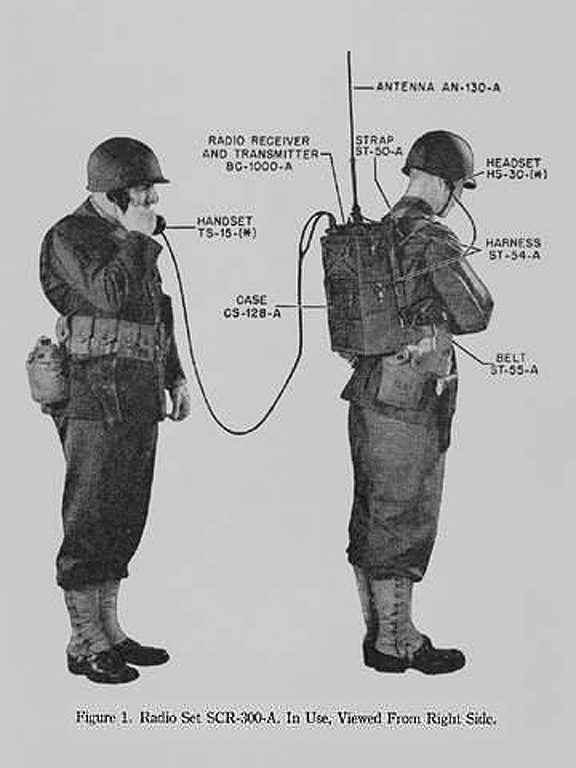 | ||
The SCR-300 was a portable radio transceiver used by US Signal Corps in World War II. This backpack-mounted unit was the first radio to be nicknamed a "walkie talkie".
Contents
History
In 1940, Motorola (then the Galvin Manufacturing Company) received a contract from the War Department to develop a portable, battery powered voice radio receiver/transmitter for field use by infantry units. The project engineering team consisted of Daniel E. Noble, who conceived of the design using frequency modulation, Henryk Magnuski who was the principal RF engineer, Marion Bond, Lloyd Morris, and Bill Vogel. The SCR-300 operated in the 40.0 to 48.0 MHz frequency range, and was channelized. It, along with mobile FM tank and artillery radios such as the SCR-508 (20.0 to 27.9 MHz) and the SCR-608 (27.0 to 38.9 MHz) marked the beginning of the transition from low-HF AM/CW to low-VHF FM for combat-net radio.
The final acceptance tests took place at Fort Knox, Kentucky. The performance of the SCR-300 during those tests demonstrated its capacity to communicate through interference and the rugged quality of the design. Motorola was to produce nearly 50,000 of the SCR-300 units during the course of World War II.
The SCR-300 saw heavy use in the Normandy invasion and the Italian campaign. It also became "key equipment" that helped deter confusion in the Battle of the Bulge.
The British adopted the design of the SCR-300 for their own use from 1947 as the "Wireless Set No. 31".
